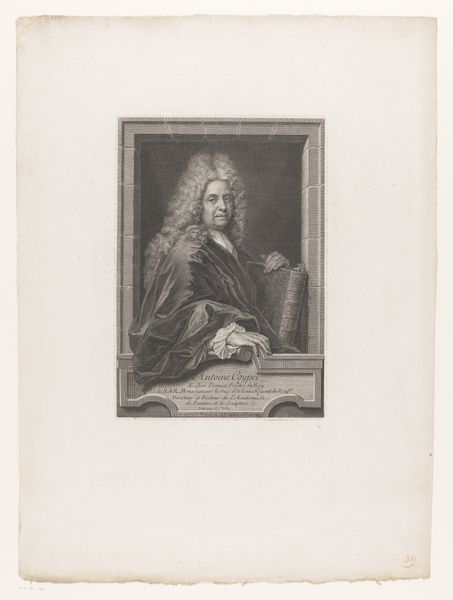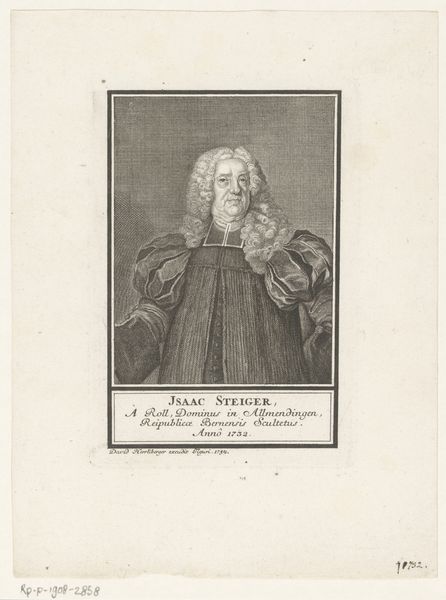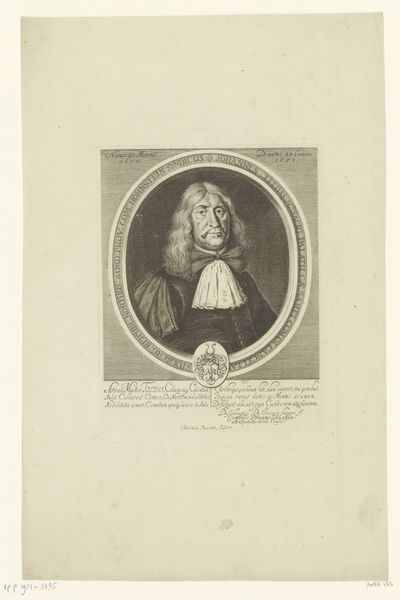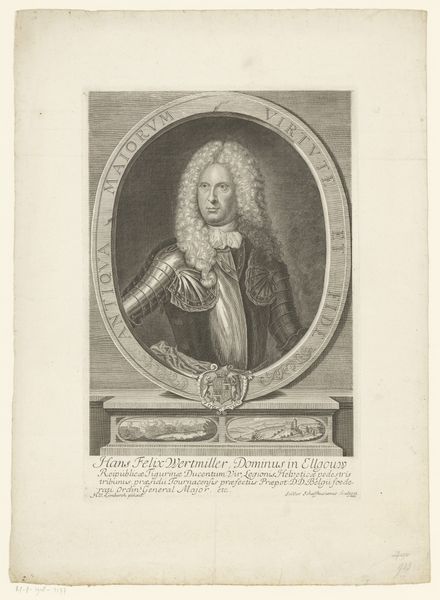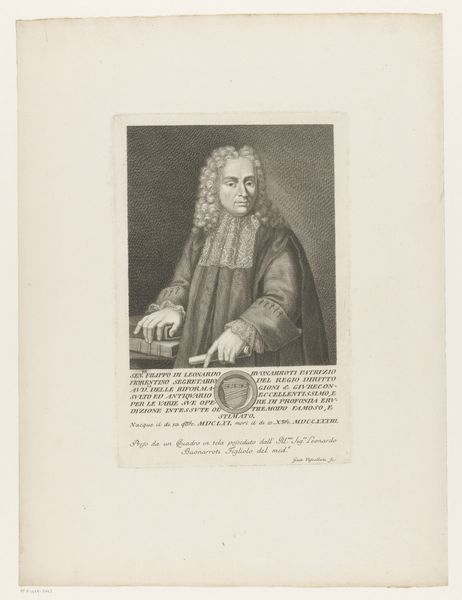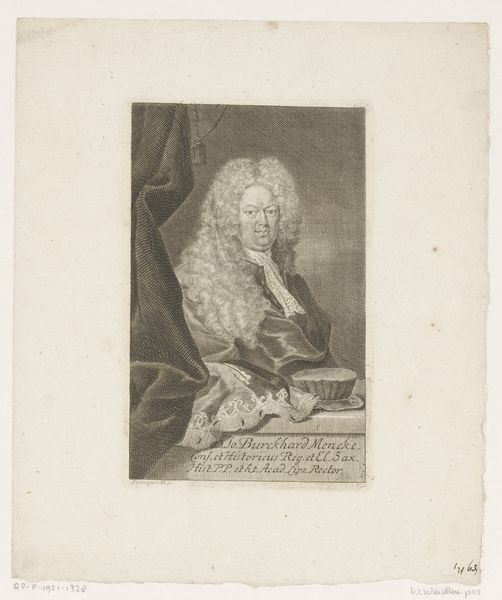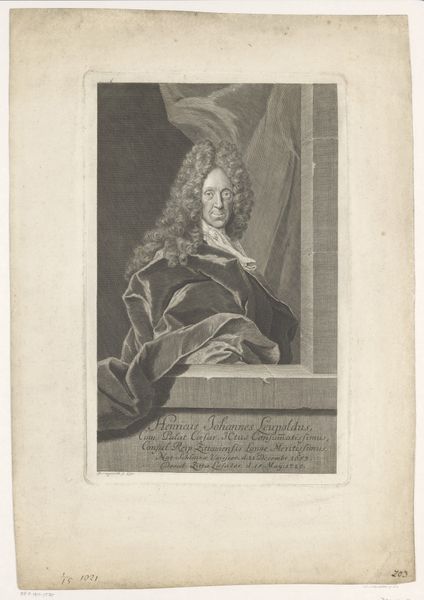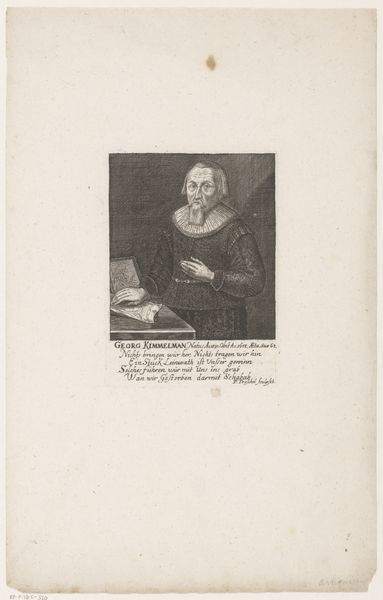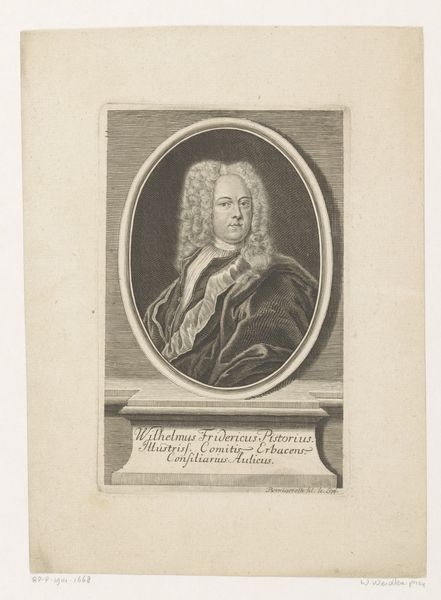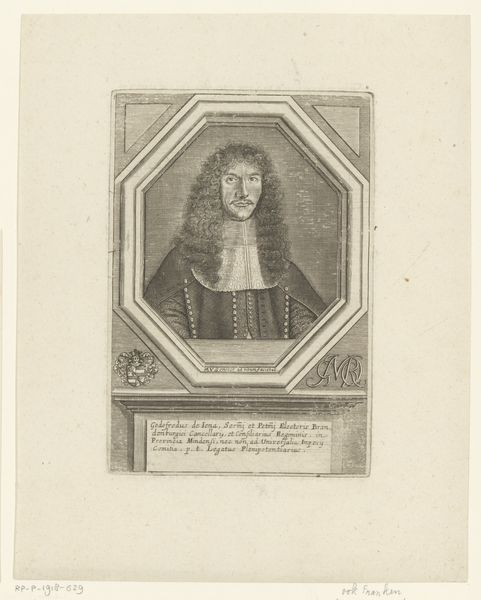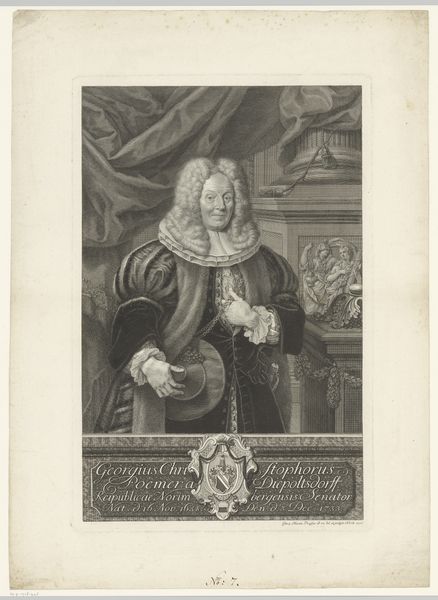
print, engraving
#
portrait
#
baroque
# print
#
old engraving style
#
history-painting
#
engraving
Dimensions: height 182 mm, width 106 mm
Copyright: Rijks Museum: Open Domain
Editor: This is a portrait of Christian Stock, an engraving made sometime between 1731 and 1733 by Johann Martin Bernigeroth. The man’s got an incredible wig and intense eyes. How would you interpret this work, considering its historical context? Curator: Well, first consider what it *meant* to create and distribute a portrait like this at the time. It's not just about Stock’s likeness; it’s about crafting a public image and reinforcing status. Consider the inscription below the portrait. What does that tell us about the intended audience and purpose? Editor: I see references to Stock's academic titles and affiliations, implying it’s meant for an intellectual or scholarly circle. Maybe it's an attempt to memorialize and publicize his authority. Curator: Exactly! Printmaking in the Baroque period was crucial for disseminating information and constructing reputations, particularly within intellectual and political elites. The "old engraving style" signals authority, tradition. Now, think about the choice of medium—engraving. How did that choice affect its distribution and impact compared to, say, a painted portrait? Editor: An engraving allows for multiple copies, expanding the audience. Unlike an oil painting which remains in the family, a patron will create prints of their face so they can be publicly consumed and exchanged among other leading persons in similar professions. It solidifies his image in a much broader way. Curator: Precisely. And beyond individual recognition, this portrait also contributed to shaping perceptions of intellectual authority *in general*. It makes me wonder, to what extent did the conventions of portraiture at the time reinforce or challenge social hierarchies? Editor: I hadn’t considered that. It’s not just about Stock; it's about the whole system of knowledge and power he represents and the institutions to which he belongs. I’ll look at these images much more closely now! Curator: Indeed, analyzing art in its socio-historical framework allows us to unlock richer layers of meaning and see the power dynamics embedded within seemingly simple images.
Comments
No comments
Be the first to comment and join the conversation on the ultimate creative platform.
